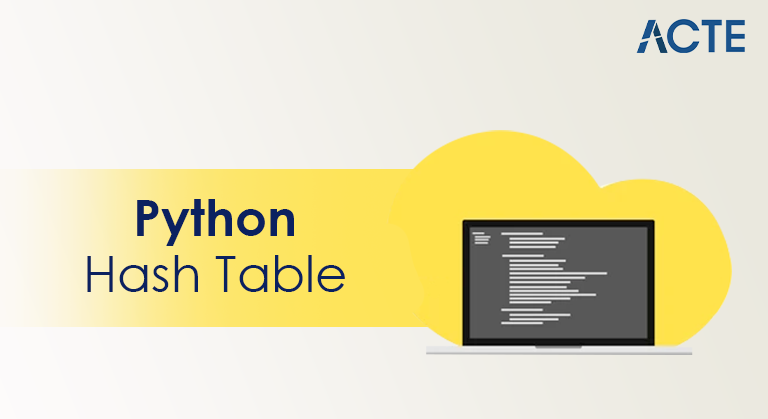
- Introduction – Understanding Big Data Storage Systems
- What is Apache Hive?
- What is Apache HBase?
- Architecture of Hive vs HBase
- Data Storage Mechanism
- Data Modeling and Schema Flexibility
- Query Language – HiveQL vs NoSQL API
- Performance Comparison
- Use Case Scenarios for Hive and HBase
- Final Comparison – Which to Use When?
- Conclusion
Introduction – Understanding Big Data Storage Systems
In the rapidly evolving world of Big Data, choosing the right storage system is crucial. As organizations generate massive amounts of structured and unstructured data, tools like Apache Hive and Apache HBase have emerged as foundational components in the Hadoop ecosystem. Dat Science Training introduces these technologies helping learners understand their architecture, query capabilities, and integration strategies for managing large-scale distributed data. While both are used for storing and querying large datasets, their architecture, data access patterns, and use cases differ significantly. Understanding the key distinctions between Hive and HBase can help you select the most suitable technology for your specific data processing requirements.
What is Apache Hive?
Apache Hive is a data warehouse infrastructure built on top of Hadoop. It enables querying and managing large datasets stored in Hadoop Distributed File System (HDFS) using a SQL-like language called HiveQL. Originally developed by Facebook to simplify Hadoop for analysts, Hive has gained popularity for its ability to handle batch processing efficiently. Hive is best suited for data analysis and querying structured data. To complement Hive with real-time messaging capabilities, Kafka vs RabbitMQ compares two leading message brokers that enable scalable event streaming, asynchronous communication, and efficient data pipeline integration across distributed systems. It compiles HiveQL queries into MapReduce jobs, making it ideal for long-running, high-latency tasks such as ETL pipelines and historical data analysis. Hive supports various file formats like ORC, Parquet, and Avro, and can integrate with tools like Apache Tez and Spark for performance optimization.
Interested in Obtaining Your Data Science Certificate? View The Data Science Online Training Offered By ACTE Right Now!
What is Apache HBase?
Apache HBase is a distributed, column-oriented NoSQL database that runs on top of HDFS. Inspired by Google’s Bigtable, HBase provides real-time read and write access to large datasets. Unlike Hive, which is batch-oriented, HBase is designed for random access to individual rows and columns, making it highly suitable for transactional applications. HBase stores data in a schema-less manner using column families and rows identified by unique row keys. To design and govern such scalable, schema-flexible systems, Who Is a Data Architect explores the strategic role of architects in building resilient data infrastructures, enforcing standards, and aligning technology with business goals. It is ideal for applications that require frequent updates, low-latency queries, and dynamic schema evolution. HBase integrates well with real-time processing frameworks and supports Java APIs and REST services for programmatic access.
To Explore Data Science in Depth, Check Out Our Comprehensive Data Science Online Training To Gain Insights From Our Experts!
Architecture of Hive vs HBase
The architectural designs of Hive and HBase serve different purposes: Hive excels at batch querying of structured data, while HBase supports real-time access to sparse datasets. Coordinating these distributed systems requires robust synchronization and configuration management. What is Apache Zookeeper explains how Zookeeper ensures high availability, fault tolerance, and consistent coordination across Hadoop ecosystem components.

Hive Architecture:
- Components like the Hive Driver, Compiler, Execution Engine, and Metastore.
- Converts HiveQL into execution plans using MapReduce or Tez/Spark engines.
- Stores metadata in a relational database (like MySQL).
- Utilizes HDFS as the primary storage backend.
HBase Architecture:
- Built on HDFS but operates independently of MapReduce.
- Comprises RegionServers, HMaster, and ZooKeeper for coordination.
- Supports real-time access via APIs and is optimized for random reads/writes.
- Data is stored in HFiles and indexed by MemStore and WAL (Write-Ahead Log).
These differences reflect Hive’s suitability for batch processing and HBase’s real-time, low-latency access.
Data Storage Mechanism
Hive and HBase differ significantly in how they store and manage data. Data Science Training clarifies these distinctions guiding learners through Hive’s SQL-like querying for batch processing and HBase’s NoSQL architecture for real-time access, enabling informed tool selection based on workload requirements.

- Hive: Uses HDFS to store data in files. Tables are stored as directories, and each row in the table is represented by a line in a file. Hive supports partitioning and bucketing to optimize data retrieval.
- HBase: Stores data in a sparse matrix format, organized by column families and rows. Each piece of data is stored as a cell identified by a row key, column family, column qualifier, and timestamp.
While Hive’s storage is optimized for sequential access, HBase’s design enables fast lookups and updates of specific data points.
Gain Your Master’s Certification in Data Science Training by Enrolling in Our Data Science Master Program Training Course Now!
Data Modeling and Schema Flexibility
- Hive: Enforces a predefined schema at the time of table creation. It’s schema-on-read, which means data is validated against the schema only during query execution. Hive is ideal for structured data with consistent formats.
- HBase: Offers dynamic schema capabilities. Data can be added without defining rigid schemas. This schema-less design makes it suitable for unstructured or semi-structured data like logs or sensor readings.
In short, Hive is preferable for traditional data warehouse needs, while HBase excels in scenarios with evolving or unpredictable data structures.
Are You Preparing for Data Science Jobs? Check Out ACTE’s Data Science Interview Questions and Answers to Boost Your Preparation!
Query Language – HiveQL vs NoSQL API
- Hive: Uses HiveQL, a declarative SQL-like language, which is familiar to analysts and database users. It supports SELECT, JOIN, GROUP BY, ORDER BY, and other SQL operations. Ideal for those with SQL backgrounds.
- HBase: Does not have a native query language like SQL. Instead, it provides Java APIs, Shell commands, and REST/Thrift gateways for interacting with data. This gives developers more control but requires more coding effort.
Therefore, Hive suits analytical reporting tasks, whereas HBase is more developer-centric, aimed at custom application logic. To navigate the complexities of choosing and implementing the right tools, Big Data Challenges With Solutions outlines common pitfalls in scalability, performance, and integration along with actionable strategies to overcome them across diverse data environments.
Performance Comparison
Hive Performance:
- Optimized for high-throughput batch processing.
- Introduces latency due to MapReduce job initialization.
- Not suitable for real-time data access or low-latency applications.
HBase Performance:
- Optimized for random read/write access with millisecond-level latency.
- Suitable for applications requiring fast lookup (e.g., user profiles, messaging apps).
- Offers consistent performance for high-concurrency environments.
In general, choose Hive for analytical workloads and HBase for fast operational data access.
Use Case Scenarios for Hive and HBase
Hive Use Cases:
- Batch data processing and analysis
- Data warehousing and ETL
- Historical data aggregation
- Business intelligence reports
HBase Use Cases:
- Real-time analytics and dashboards
- Random reads/writes on large datasets
- Time-series data storage
- Messaging, search indexes, and IoT data ingestion
Each tool serves different aspects of Big Data processing, so their application should align with workload requirements.
Final Comparison – Which to Use When?
When choosing between Apache Hive and Apache HBase, think about the nature of your project. Use Hive when you need to analyze historical data, prefer SQL for your queries, or focus on ETL pipelines and reporting dashboards. Hive is designed for batch processing and works well with fixed schema data, making it a good option for data warehouses. In contrast, pick HBase if you need fast data retrieval and quick updates. To evaluate alternatives for high-performance querying, Hive vs Impala compares two leading SQL engines in the Hadoop ecosystem highlighting differences in latency, execution models, and use cases for real-time analytics versus batch workloads. HBase is great at handling sparse or variable schema data and is perfect for online applications like user profiles, chat apps, and IoT data streams.
Conclusion
Both Apache Hive and Apache HBase are integral to the Hadoop ecosystem but are designed to serve vastly different purposes. Hive is best suited for analytical processing over massive datasets using a SQL-like interface. In contrast, HBase offers real-time, low-latency access to large amounts of semi-structured data. Data Science Training explores both technologies enabling learners to choose the right tool for batch analytics versus real-time access, and to architect hybrid solutions within the Hadoop ecosystem. Depending on your organization’s needs be it analytics or operational efficiency you may use either of them or even integrate both into your big data architecture.


